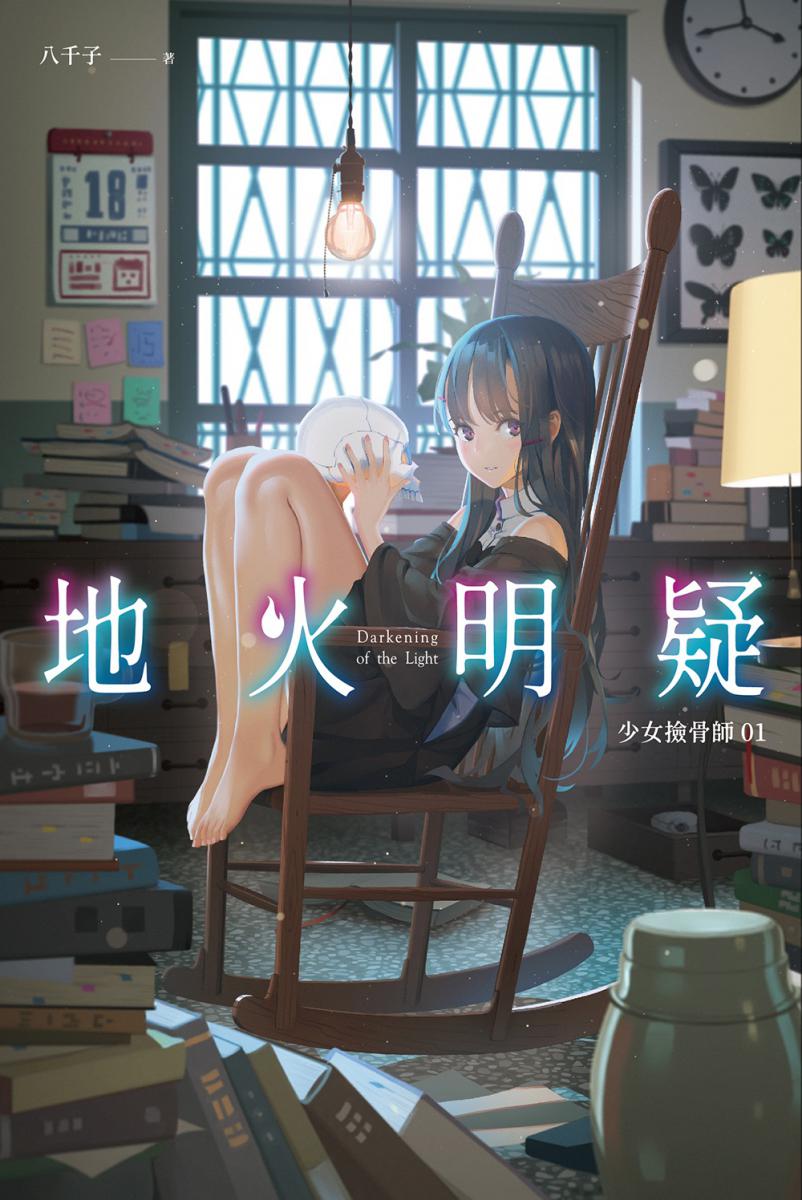He was a twenty-year-old university student when his first novel, Testimony, won a special recognition prize at the third annual Sharp Point Media Awards. Shortly afterwards Hassengo was shortlisted for the Mystery Writers of Taiwan annual submission prize. Not six months after that, the first novel of his MY SISTER IS A TEENAGE BONE COLLECTOR series was published, describing the adventures of a young girl who is a specialist in the grisly work of traditional Taiwanese funerary rites. While MY SISTER IS A TEENAGE BONE COLLECTOR (VOL.1): NEVER SAY DIE incorporates elements of Taiwanese folk religion and burial practices, its tone is light, easing readers into comfortable contact with its sometimes macabre subject matter. By focusing on traditional Taiwanese culture, Hassengo liberates himself from the perennial subjects of popular fiction – fantastic heroes, teenage angst, and campus romance – delving instead into philosophical questions concerning life and death, tradition and modernity, and reason and faith. The result is tale of deduction built on a foundation of mysticism and superstition, but whose ultimate allegiance lies with that most enjoyable of literary genres: the light novel.

MY SISTER IS A TEENAGE BONE COLLECTOR (VOL.1): NEVER SAY DIE
When Forensics and Locality Collide
When asked about the impetus for the novel, Hassengo smiles and replies, “I wanted to use this imported literary form, the light novel, to write a story that only a Taiwanese author could write.”
Once the form was set, the inspiration for the subject matter struck during his undergraduate studies. Hassengo was pursuing a degree in forensic medicine at the University of Leicester at the time, and was particularly fascinated by his lab courses in forensic autopsy. He was dissecting cadavers when it hit him. “That’s it! I could use ritual bone collecting[1] as a starting point, and write a story against a backdrop of traditional Taiwanese culture.”
After graduating and returning to Taiwan, Hassengo discovered there were practical limitations to applying the forensic science he had learned: his coursework was based on data collected in Western countries. Hassengo explains: “As a practical matter, forensic science places a lot of emphasis on the geographical environment. Everything I had seen and researched in school was based on case studies from outside Taiwan. If I directly applied that knowledge in Taiwan, it could lead to a lot of problems.” This realization led him to ponder how the land and culture of Taiwan had shaped him growing up. That’s when he decided he had to reevaluate Taiwanese folk beliefs from a scientific perspective.
A Family Legend and the Nature of Belief
“Some of the material for MY SISTER IS A TEENAGE BONE COLLECTOR came from my paternal grandfather who ran a traditional massage and therapy clinic. He was more than just a traditional healer; he also performed Daoist rituals. He had a number of disciples at the time, and left behind written records of his work. Unfortunately, no one understands his writings very well, so I don’t know how the rituals were carried out.” Hassengo’s excitement is obvious as he shares the connection between the precious heirlooms left by his grandfather and the subject matter of his novel.
“Much of my grandfather’s writing had been passed on to his disciples. As I was gathering materials for my novel, I had to run all over Taiwan visiting these disciples and piecing together my grandfather’s work. But in the end, there were a lot of discrepancies. Various handwritten notes and journals came to have different interpretations in the eyes of different disciples. It was hard to know which version was authoritative.” Hassengo recalls, “My research forced me to conclude that every student has their own interpretation of what they learned from the master.”
For this reason, as Hassengo began to grapple with issues of belief in his novel, he gradually broke with the exacting demands of science, and adopted an attitude of broad-minded acceptance. “I had to follow a certain principle to avoid coming across as an absolutist. Basically, if someone believes something is true, then it’s true. If someone else has a different point of view, you can’t saw it’s wrong. As long as each person can go on believing what they believe, then everything’s ok.”
There is a depth in Hassengo’s thinking that belies his youth, and nowhere is that more apparent than in his handling of sensitive topics. In the second and third novels of the series, he touches on the political events at the heart of the deepest divisions in Taiwanese society: the period known as the White Terror. How does Hassengo view this period of history, and why did he choose to write about it?
Read on: https://booksfromtaiwan.tw/latest_info.php?id=103
[1] Bone collecting is a religious rite that involves retrieving bones from graves, usually three to five years after burial, to be stored in a special funerary urn. The process is carried out by a ritual specialist known as a bone collector.